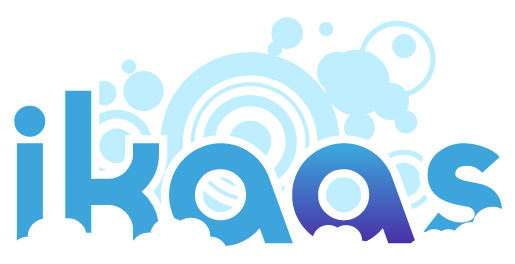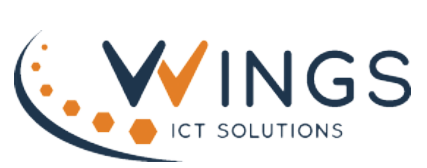Published on 31/01/2022

About the project:
The success of the IoT world requires service provision attributed with ubiquity, reliability, high-performance, efficiency, scalability. Towards this goal, the iKaaS project (http://ikaas.com/) merges IoT with Cloud Computing concepts by combining global and local clouds, security gateways, communication interfaces, storage units and applications for the realization of an intelligent Knowledge-as-a-Service platform. The introduction of cognition was the first step for the IoT success, as it brought essential self-management/ awareness. iKaaS aims to proceed to the next vital step for the IoT success and for new business value propositions for the IoT world combined with cloud principles.
Objective
iKaaS develops an intelligent, privacy preserving and secure Big Data resource and analytics engine built atop a multi-cloud infrastructure that will be fed with large scale ubiquitous data collected from heterogeneous sensing networks and data sources. A key objective of the project is to showcase through pilots and applications focusing on smart city and smart health aspects, the power of the iKaaS platform, in terms of combining Local and Global Clouds to provide optimal service deployment, smart virtual object as a service and Knowledge as a Service for building innovative, cross-border, situation-aware applications.
The iKaaS platform is essentially an intelligent and secure multi-Cloud IoT platform based on Semantics and Data Models, Big Data resources and heterogeneous Cloud environments, with data collected from a variety of sensors from IoT environments deployed as mobile terminals, smart devices, and smart homes. The platform offers features for Smart City applications promoting self-management of health and safety of citizens, as well as offering enhanced data analysis for deriving ways to improve quality of life in a city (improving commuting, experience of public transport, participation to events, etc.). The platform approach focuses on semantic-data models for the description of heterogeneous devices, services, applications, as well as on the development of a decentralized heterogeneous secure multi-Cloud environment, comprising multiple Edge/Local Clouds and a Global (Federated) Cloud. The separation between ‘Edge/Local’ and ‘Global’ cloud, in the context of our implementation, is determined as follows. The ‘Edge/Local Cloud’ is characterized by the existence of IoT devices attached, can have geographical characteristics in a specific time period, and provides sufficient computing, storage and networking capabilities, responsible for the provisioning of particular services. The ‘Global Cloud’ is considered as a traditional cloud infrastructure that provides on-demand/elastic (illusion of infinite) processing power and storage capability, ensuring at the same time the increase of the business opportunities for service providers, and the ubiquity, reliability, performance, efficiency, scalability of service provision.
Use cases/verticals
The project focuses on the following use cases:
- Environmental health in the city of Madrid (Spain).
- Town management and health support in Tago-Nishi (Japan)
- Assisted Living in Smart City
Aspects showcased and validated through the corresponding project pilots and prototype include for example a town management application, which is provided by using virtual reality technology and head-mounted display to enhance the user experience in immersive environment, and an Ambient Assisted Living application (by WINGS) where the iKaaS platform is exploited for services to improve the quality of life of elderly/disabled individuals. Moreover, security aspects addressed in the context of the project are validated through a prototype implementation of the so called security gateway concept, through which the provision of access control to each local cloud while interpreting the differences in regulations between countries is showcased and validated.
WINGS involvement
“WINGS Knowledge as a Service for Smart Living in the City”
The WINGS Knowledge as a Service for Assisted Living in Smart City (KaaS_SCL) is a solution for Smart Home and Smart Health Care that comprises of an implementation of the Cloud-based iKaaS platform and an accompanying mobile AAL application for home automation and remote health monitoring aiming to provide the following services:
- Automated home environment adaptation with functionality for learning user patterns to forecast user desires with respect to home and appliances configuration and proactively take actions/offer recommendations. Bayesian statistics are exploited for the estimation of future temperature settings in the home desired by the user.
- Remote Health Monitoring, comprising functionality for learning patterns in user physical status and behaviours to identify pattern irregularities (any abnormality in usual patterns). The corresponding information can also be provided to family members and/or professional caretakers, and appropriate alarms may be raised if necessary. Timeseries forecasting is exploited for deriving future vital signs measurements.
- Smart mobility for the provision of navigation instructions, helping with the use of public transportation, information on potential dangerous locations in the proximity of the individual taking into account user preferences and health/well-being status.
The scenarios implemented, scale from the initialization processes in the system for the introduction of real-world devices and the registration of simple services that actually allow the association of data sources to the local cloud, to the dynamic creation, provision and reconfiguration/migration of complex services for automated home environment adaptation, remote health monitoring and smart mobility. In the following, the focus is on the dynamic reconfiguration of the services for Assisted Living through the switch from a Smart Home Local Cloud to the Smart City Local Cloud triggered by a change in context, i.e. the location of the user. The user is originally located within the home and when his/her location changes this triggers a “handover”/service migration to a different more appropriate Local Cloud; in this case the Smart City Local Cloud.

Overview of dynamic reconfiguration of the services for Assisted Living through the switch from a Smart Home Local Cloud to the Smart City Local Cloud triggered by a change in the location of the user
Initially communication between the mobile AAL application and the Global Service Manager is established. The Global Service Manager works as proxy for the federation of multiple Edge/Local Cloud environments and provides service management capabilities, such as the service deployment and reconfiguration. Initially, (step 1) the application informs the Global Service Manager that the user is located in the Smart Home Edge/Local Cloud, and in its turn the Global Service Manager acquires appropriate information from the Global Service Catalogue (step 2) and the Global Data Processing (step 3) with respect to the AAL service deployments that includes the Smart Home and Smart City Edge Clouds. Assuming that the user is initially at home, the application is first connected to the Smart Home Edge/Local Cloud by interacting with the (Local) Service Manager (step 4). The Service Manager acquires information with respect to the available IoT device represented as Virtual Entities (VEs) (step 5) and it works as the proxy for the retrieval of processed data from the distributed VEs, through the Data Processing component (step 6). While the user is moving the mobile application detects the change in location and informs the Service Manager that forwards this change to the Global Service Manager so as to find the new appropriate Edge/Local Cloud where the service will be migrated (step 7). The Global Service Manage detects the new Edge Cloud that can serve the application and informs the latter by sending the appropriate information (step 8). The application starts to communicate with the new Service Manager (step 9) and the rest of processes, follow the data acquisition and data processing flow (steps 10 & 11) from the Smart City Edge Cloud devices.
WINGS prospects/exploitation
Currently there are very few – if any – commercial solutions available offering both Smart Home and Smart Health services. Thus, regular consumers, elderly and/or disabled people and their family members have to purchase individual products for home automation and remote health monitoring/mobile health services, which in most cases cannot be linked to each other. Furthermore, a majority of offered solutions, especially for remote health monitoring/mobile health and fitness services are tied to specific devices, thus regular consumers, elderly and/or disabled people and their family members, as well as health care professionals are bound to solutions from specific vendors and face the risk of not being able to access/exploit their existing data when switching to different devices/vendors. KaaS_SCL aims to provide data and service continuity between devices (e.g. if a consumer first has a wearable device from vendor A and then buys another wearable device from vendor B the data from the original wristband is preserved and mapped to the new wearable device). Moreover, automation features and personalisation are very limited in existing solutions. While some products include self-management and learning capabilities these are limited to very specific functions (e.g. in the case of Google Nest they are mainly linked to temperature adjustment within the home). Most commercial solutions available provide tools for users to set up their own rules for automation but this can be very tedious especially for technology agnostic users. Finally, from a vendors and operators perspective the management of IoT infrastructure and services requires a lot of resources for deploying new services, operation, configuration, maintenance and repair of the IoT infrastructure. Many configuration and repair actions require human intervention which can be timely, costly and error prone. Moreover, the provision of personalised services targeted to individual users may require the re-development of specific customers to better suit their needs. KaaS_SCL aims to increase the efficiency of deploying new services and making changes to the IoT infrastructure, allowing for its configuration in an autonomous, cognitive manner taking into account user requirements and context as well as the current status of the infrastructure KaaS_SCL will provide support that will enable reducing the need for human intervention by introducing self-management features of the IoT infrastructure and services thus improving the overall efficiency and reducing errors that may occur. Increased efficiency may also offer opportunities for utilizing IoT resources in diverse ways, potentially opening new revenue streams for operators.
WINGS will exploit iKaaS solutions to enhance the existing WINGS services and will utilise the KaaS_SCL to extend the WINGS product portfolio in the area of IoT/Cloud platforms. iKaaS solutions are exploited to enhance WINGS solutions with extended semantic models able to represent multiple heterogeneous resources (IoT devices and functions, cloud computing, storage, networks, etc.) for supporting a variety of novel applications. WINGS is enhancing and adapting its suite of software tools and APIs for intelligence for cloud-based Internet of Things (IoT) applications and services.
Awards & demonstration video
Award: iKaaS team received the Best Booth Award, in the context of the EuCNC2017 Conference, Oulu, Finland.

Demonstration: iKaaS exhibition booth, in the context of EuCNC2016, Athens, Greece.

Website: http://ikaas.com/
Framework: H2020 EU-Japan collaboration
Duration:
![]() This project has received funding from the Horizon 2020 programme under grant agreement No 643262
This project has received funding from the Horizon 2020 programme under grant agreement No 643262

